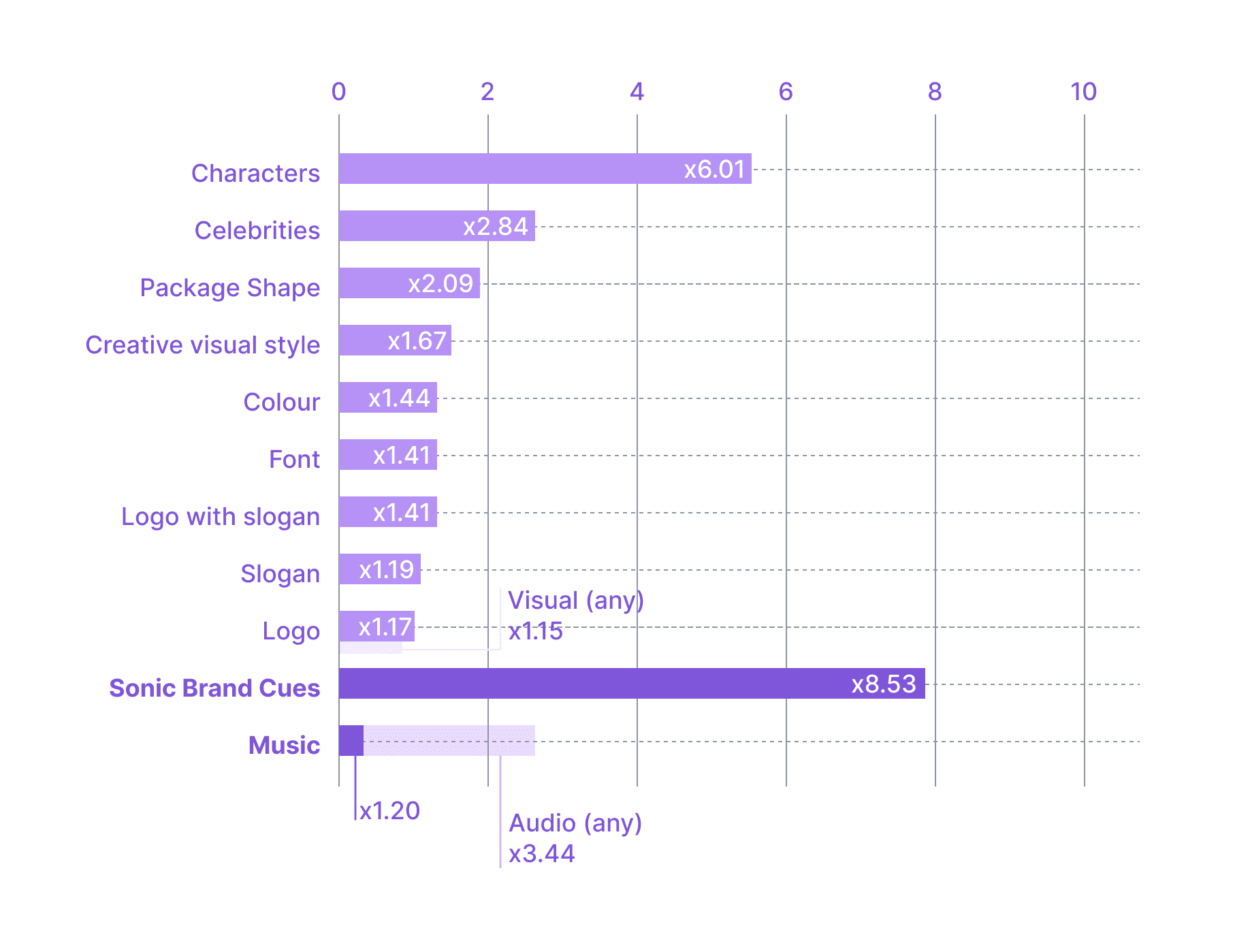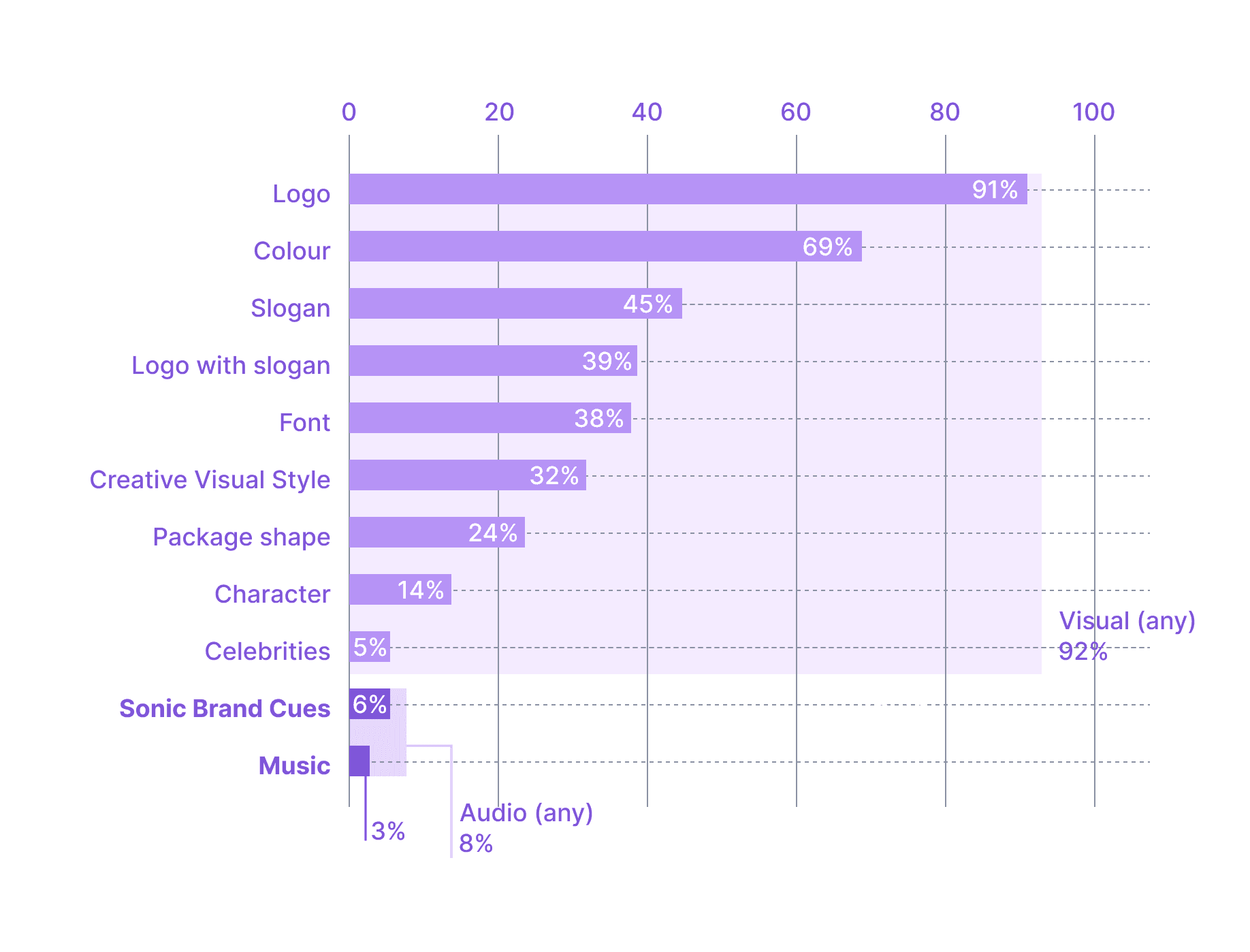Up until now, we have talked about the marvelous ideas behind music branding, how it has evolved from jingles to full holistic corporate acoustic identities and, in the end, how it can embody and give personality to the essence of a brand on the auditory level.
When we think of branding from a visual perspective, it is easy to see the benefits that a company might draw from a system of visual brand assets it can apply to all of the products it sells and all the different markets. It gives the brand a unique touch and makes it stand out on the supermarket shelves or in the digital environment in which online-only brands compete. Even though the same can be said for music branding, leaders and executives in big companies are starting to understand the power and the importance of a unique touch in the audio realm just now. This is because, unlike a visual representation of a brand, a sonic identity can be trickier to understand and even more trickier to track when it comes to performance indicators (KPI).
During this research, I posed this question to the Global Director of Clients of a major music branding consultancy. To him, it looks like a no brainer for companies to invest in music branding. I asked him: "what is the real value of music branding and why should a company have an auditory presence on the market?" Here's the answer:
«It's proven to be effective. If you take a look at the IPSOS report from 2020 this is becoming the gold standard of data for every company that wants to invest in audio branding nowadays. That proves there is value in it. Let's think of the investment of the brand, which could go from 100k to 500k euros depending on what type of engagement is required from the company. Let's assume an initial investment of 250k euros. Based on this, you will get a substantial amount of brand assets you can deploy wherever, the infrastructure is already there because you have been communicating.
He then continues: "This is something that you add-on and start using. The first investment would be in money, while the second is in time. Time spent on making people aware of new brand assets and time on deploying new brand assets. Doing the numbers on this, the implementation should start paying you back in the next two or three years if it really starts working for your brand and I'll up your recallability or distinctiveness by a couple of percentage points. For an international company, that's a no-brainer.
If you could say : “We are going to sign this year's investment and within four years, brand recall will lift by X% if you stick to the plan.” then, no brand will think that it is not going to work for them.»"
If a company can grow by a couple percentage points on sales by deploying brand assets, they will gladly invest the money. Since music branding as a system is something that has been gaining traction only in the last few years, for a long time research on effectiveness has been stuck and waiting for new behavioral evidence to show up. Finally, in 2020, IPSOS (Institut de Publique Sondage d'Opinion Secteur) -a multinational market research and consulting firm- uncovered The Power of You: Why distinctive brand assets are a driving force of creative effectiveness 1.
Adam Sheridan at IPSOS set out to conduct market research on the effectiveness of music branding and other exclusive brand assets in order to understand what works and what is the most valuable. They conducted a meta-analysis of over 2,000 pieces of video creative, examining the relationship between effectiveness and the presence or absence of brand assets. Three main insights came out of this research:
The presence of brand assets is strongly linked to positive branded attention effects, more so than just directly showing or talking about the brand.
Brand assets that leverage the power of you, such as characters and sonic brand cues, are more effective than assets that are leveraged from wider culture, such as celebrities and music.
While less frequently used, audio assets are on average more effective than some visual assets, which suggests brands can take the opportunity of audio to improve the branded attention of their video creative over time.
These insights marked an astonishing result for the music branding industry. It is one of the first times in which a study could confirm not only that audio is indeed a valuable form of recall, recognizability and added value to the brand, but also that it is the most effective way to drive recall and create a connection with the consumer!
Thanks to the elaborate metrics in market research, in the pictures below IPSOS was able to establish that although used in less than 10% of cases found in their dataset, audio was performing 3.44 times higher than any other brand assets. Sonic brand cues, like those described in the last chapter, were 8.53 times more effective in brand attention than other cues.


No wonder why IPSOS describes it as a “missed opportunity”. According to a research study by DLMDD and SoundOut conducted in 2021 2, sonic logos that are recognized by customers increase the brand’s value on average by 5% while simultaneously driving consumer purchase intent. The study, undertaken by DLMDD and SoundOut, the world's leading sonic testing companies, is the first of its kind to examine the value and ROI of sonic logos in the marketing and branding industries.
The study also discovered that when consumers make no connection between the sonic logo and the brand, their perceived value drops by 7.7%, emphasizing the importance of recall, recognition, and brand equity in sonic identity design.
A consumer panel of 8,000 people aged 16 to 65 years tested the audio logos of 40 big UK businesses for the UK audience. ASDA, Just Eat, Haribo, Lloyds Bank, AO, Renault, and Moonpig were among the brands represented. 22,000 individuals between the ages of 16 and 65 in the United States were shown 110 brands.
“What a time to be alive in the world of sonic branding. Brands are investing in sound like never before and this new research is the first of its kind to identify the return on investment in sonic logos. However, the findings also signal a firm watch-out to brand leaders – work with the sonic brainiacs to get your sound right. Banging a few random notes at the end of your next campaign could send your brand value nosediving in the opposite direction.”
Consumers now associate which brands have a particular acoustic character. Nearly 20 years after its introduction, McDonald's legendary 'I'm Lovin' It' jingle, recreated by Justin Timberlake, came out on top. The second place went to Coca-signature Cola's bottle opening and fizz sonic world. Netflix's instantly recognized sound emblem takes a more immersive approach, and has only been in the public ears for a few years.
Netflix's "ta-dum" has become a worldwide earworm.
All of these businesses are ahead of the curve in terms of activating customer recognition and spending by creating emotionally resonant, modern, and multidimensional brand worlds that 'cut through the noise' of their competing settings.
“The creative industry has been making a noise about sonic mnemonics for decades. But it’s changing fast. Sound design for brands has evolved from ‘just jingles’ to fully immersive soundscapes.”3
All of this research is showing great potential for the future of music branding, and music branding 2.0 is fully taking advantage of these insights. Nonetheless, brands need to keep in mind the importance of tracking their results with tangible and reliable KPIs.
But how do you track a brand's sonic identity? I asked the Global Creative Strategy Director at a music branding consultancy.
“If we are talking about post launch brand tracking, that style of measurement, then many brands will have a brand tracker that they will be using either with a third party or in-house themselves.
We have a few questions that have been validated in terms of their authenticity for research which can help look at the effectiveness of the sonic branding. So, for example, for Colgate, we are tracking alongside a third party called IPSOS to look at how the Sonic brand is aiding spontaneous recognition of what they call Equity Content across LATAM, so equity content is like general brand content, so that's like General Colgate. Feel good branded content. It's not like this is that product line, this is the toothpaste. It's not like that. It's general branded content. We found that only over a period of seven months that the sonic brand has increased fairly significantly the spontaneous recognition of branded equity content. Which is great!
So it's a series of questions that you put into a brand tracker that can help tell how much the sonic brand is aiding various things like brand recognition, etc. Then you can extrapolate that a certain amount increase in brand recognition creates a certain amount of increase in brand strength. There's so much research out there which is a separate topic on the ROI of brand strength so you know it's all additive in that way.”
Conclusion
In the next couple of years, we are definitely going to witness a great increase in sonic branding use or unique sonic brand assets. It is a great time to diversify the way we are used to thinking about advertising and the way brands reach consumers. Thanks to technological advancements, creative -now more than ever- have the ability to really engage with customers in new and diverse ways. In the audio space, innovation is on the rise.
-
1.
➚
Sheridan, A. (2020, February). The Power of You: Why distinctive brand assets are a driving force of creative effectiveness. IPSOS View.
McCullough, E. (2021, November 9). Brands with recognised sonic logos perceived as 5% more valuable. DLMDD. Retrieved February 12, 2022.
Ramsden, J. (2022, February 2). Sound, the new power asset for brands Coley Porter Bell. Retrieved February 12, 2022.